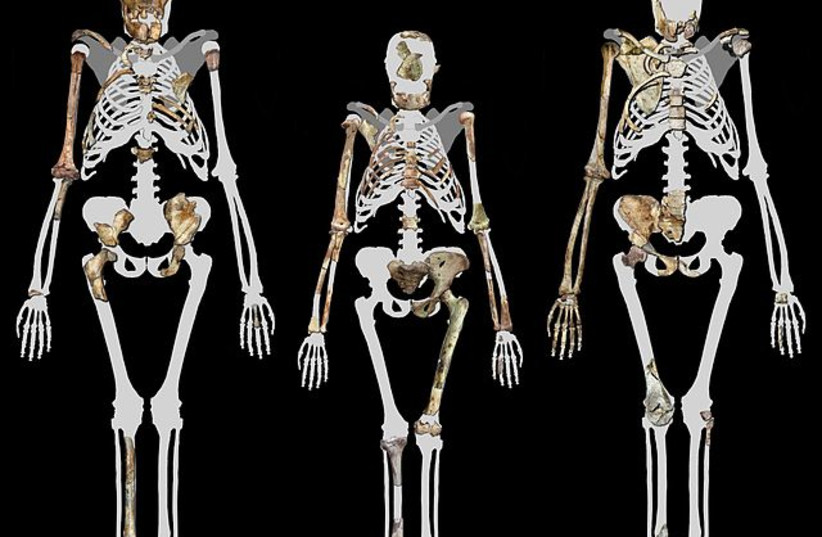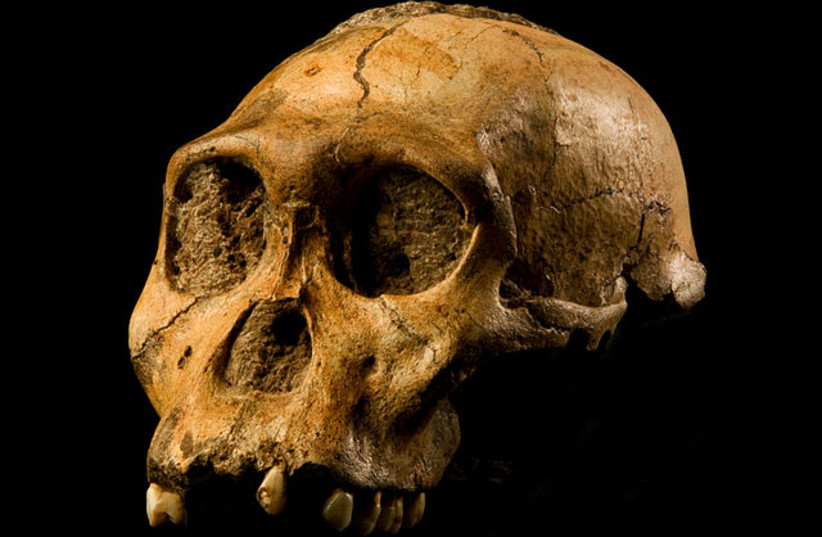 Jews Were Massacred in 1948 Too, So Why Dwell Only on the Nakba?
Jews Were Massacred in 1948 Too, So Why Dwell Only on the Nakba?
Uri Misgav
 Aftermath of the attack on the Hadassah hospital convoy, April 13, 1948. Eighty of the 105 passengers were murdered. Credit: Marlin Levin
Aftermath of the attack on the Hadassah hospital convoy, April 13, 1948. Eighty of the 105 passengers were murdered. Credit: Marlin Levin
On April 13, 1948, an aid convoy left the center of Jewish Jerusalem for the besieged and isolated enclave on Mount Scopus, site of Hadassah Hospital and the campus of the Hebrew University. The convoy consisted of ambulances, armored vehicles, supply trucks and buses carrying physicians, nurses, medical students and academic faculty. Near the village of Sheikh Jarrah, the convoy hit a land mine and was attacked by machine-gun fire, before being stormed by Palestinian militiamen who shot the passengers individually and torched the buses. Eighty of the 105 travelers were massacred.
Three weeks earlier, a similar fate had befallen an aid convoy that tried to reach Kibbutz Yehiam, in the north of the country, which was under siege and being shelled. That convoy was attacked by Arab gangs near Kibbutz Kabri, and 47 of its 86 passengers were killed. Some of the bodies could not be identified because they had been mutilated. In January 1948, all 35 fighters from the Palmach strike force of the Haganah militia, and from Hish, the Haganah’s field corps, were similarly killed on their way to bring aid and reinforcements to the besieged Etzion Bloc settlements south of Jerusalem.
A number of additional aid convoys dispatched to the Etzion Bloc also did not manage to escape a bitter fate. Kibbutz Kfar Etzion fell on May 13, 1948, the day before the termination of the British Mandate; 242 members of the kibbutz and Palmach and Hish fighters were killed in the battle. A few dozen more fighters and civilians, including women, were slaughtered by Palestinian fighters after the battle had been decided; only four managed to flee. The three other kibbutzim in the area surrendered, and their residents were spared a slaughter thanks only to the intervention of Jordan’s Arab Legion, which took them to POW camps in Jordan. Immediately afterward, the four settlements were razed to the ground.
In the total war of existence that began to rage in Palestine following the adoption of the United Nations’ partition resolution of November 1947, that was the certain fate of every Jewish settlement that fell to the Arabs: the killing of fighters and civilians alike, mutilation of their bodies, looting of property and destruction of the houses and other buildings. The pattern repeated itself at Beit Ha’arava, Nitzanim, Moshav Atarot, in Jewish neighborhoods of Jerusalem that were attacked and in other mixed cities.
In some cases, this was part of a chain of events and reactions, a bloody cycle typical of the militia and local warfare that characterized the war’s first half year, until the invasion of seven Arab armies into the territory of the Jewish state upon its declaration. Thus, for example, it’s argued that the attack on the Hadassah convoy was perpetrated in reaction to the massacre in the Arab village of Deir Yassin. And after members of the Irgun underground threw bombs from a moving vehicle at Arab workers in the Haifa oil refineries, murdering 11 of them, their friends, aided by local reinforcements, fell upon the Jewish workers – most of them clerks and white-collar staff – killing 39 of them with sticks and stones in a massacre that went on for about an hour.
It was a life-and-death war, brutal and bloody. The Jewish community lost fully 1 percent of its population (6,000 killed out of a population of 600,000), and a 10th of the remainder became refugees in their own country. Their unknown and suppressed story is documented in a 2014 book by the historian Dr. Nurit Cohen-Levinovsky, “Jewish Refugees in Israel’s War of Independence” (in Hebrew). However, with time’s passage, it has become politically incorrect to talk about Jewish fighters who were killed (some of them were young, others were older and had families, there were new immigrants with no military training who hadn’t even managed to learn Hebrew, Holocaust survivors, women and in some cases teenagers), or about civilians who were murdered or settlements that were evacuated and destroyed, and whose residents became refugees.
 Representatives of the Arab Legion and the IDF meet near Latrun for a prisoner exchange, November 11, 1948.Credit: GPO
Representatives of the Arab Legion and the IDF meet near Latrun for a prisoner exchange, November 11, 1948.Credit: GPO- Ironically, it’s the Israeli right that’s acknowledging the Palestinian Nakba
- Burying the Nakba: How Israel systematically hides evidence of 1948 expulsion of Arabs
Today there is apparently only the Nakba: It consists of the killing and expulsion of Arabs, Palestinian villages that were destroyed and Palestinian refugees. This historiographic distortion, with its absurd and immoral lack of symmetry, is the apple of the eye among certain circles in Israel, Arabs and Jews alike.
Haaretz serves as a generous and enthusiastic platform for this willful blindness. It enables the Palestinian citizens of Israel, like my colleagues Odeh Basharat and Hanin Majadli, speaking on behalf of Arab society, to shirk off all responsibility for its fate – from the 1948 war up until the present day. The Palestinians, since then and for all time to come, are solely passive, innocent victims of the Zionist project of evil. There are of course also Jews who see it this way, in academia and in the media. Gideon Levy is a prime example.
Adam Raz, whom I like and esteem, is definitely an industrious and serious historian. There is no reason to doubt the sincerity of his striving to clarify the historical truth – not when it comes to the Israeli nuclear program, and not in regard to the events of the 1948 war, which occupies him in the context of Jewish looting and Jewish acts of massacre. Raz’s latest article on the latter subject (“Classified docs reveal massacres of Palestinians in ‘48 – and what Israeli leaders knew,” Dec. 9) is based largely on newly declassified cabinet discussions that were held in the wake of reports about a number of massacres perpetrated in Arab villages in the final stage of the war. To his credit it should be said that Raz made it clear that most of the material and the facts remain redacted, and the quotes of the ministers that appear in the investigative report are actually based on oral testimonies, which there is no other possibility to prove.
However, for Haaretz that was more than enough. The editorial published two days later already stated, categorically and sweepingly: “Soldiers of the Israeli army committed war crimes during the War of Independence, chief among them were massacres in Palestinian villages that were captured in the decisive battles in the lowland plain between the coast and Jerusalem, in the Galilee and in the Negev. People who were alive then described mass murders of Palestinian civilians by the troops who conquered their villages; execution squads; dozens of people being herded into a building that was then blown up; children’s skulls smashed with sticks; brutal rapes and villagers who were ordered to dig pits in which they were then shot to death.”
And Gideon Levy, in a column on the very same editorial page, went, as could have been expected, one step further: “What we did then to the Palestinians we continue to do now, only more forcefully… the mechanisms of whitewash and justification will cover up any disclosure from 1948… Please don’t disturb us, we are carrying on – with the same crimes, or similar ones.” In other words, according to the recent recipient of the Sokolow Prize, Israel’s top award for journalism, today, too, Israel Defense Forces soldiers in the territories murder Palestinians in their masses, smashing children’s skulls, committing violent rape and ordering villagers to dig pits before shooting them to death in those same pits.
What we have here is a truly ecstatic celebration of exaggeration, falsehoods and self-undermining and flagellation, and wallowing in feelings of guilt. If we truly want to pursue a serious discussion of the 1948 war, it must be balanced. If the truth, then the whole truth. If one is quoting historian Benny Morris, please also quote his factual and superb book “1948,” and not only the breakthrough “Birth of the Palestinian Refugee Problem.” And without evading the basic facts: The Palestine Arabs launched murderous acts of hostility immediately after the adoption of the partition plan, which they opposed, by means of 400 armed local militias. Arab armies invaded the Jewish state immediately upon the termination of the British Mandate in order to destroy it and to erase any memory of its existence; those armies included expeditionary forces from distant Iraq and also thousands of volunteers of the Arab Army of Salvation.
If the ideal is the sanctity of historical research and truth, we need to ask where the Palestinian versions of Adam Raz, Akevot Institute and Zochrot are. In any event, my Haaretz colleagues don’t make do with clarifying the facts and often seem to feel that Israelis are required to offer an “apology.” It’s disheartening to be dragged back there again 74 years after the war erupted, but the apology was already formulated by Ephraim Kishon in his genius: “So sorry we won.”
Zawartość publikowanych artykułów i materiałów nie reprezentuje poglądów ani opinii Reunion’68,
ani też webmastera Blogu Reunion’68, chyba ze jest to wyraźnie zaznaczone.
Twoje uwagi, linki, własne artykuły lub wiadomości prześlij na adres:
webmaster@reunion68.com



